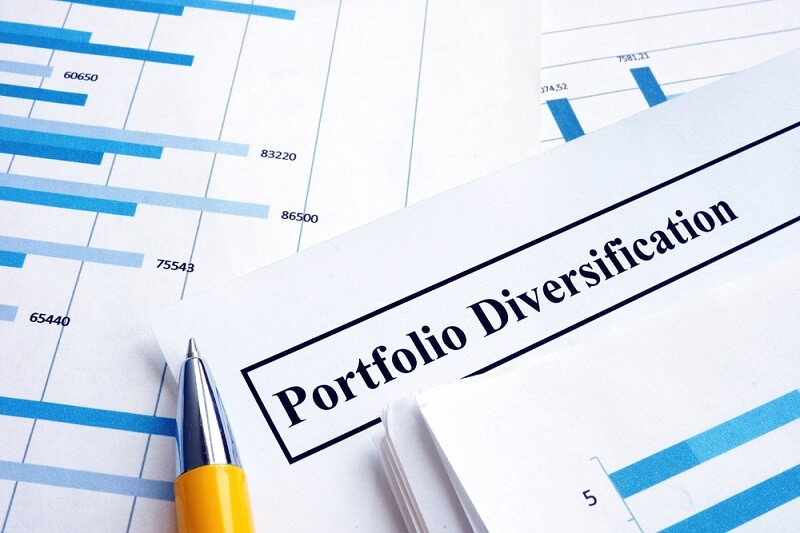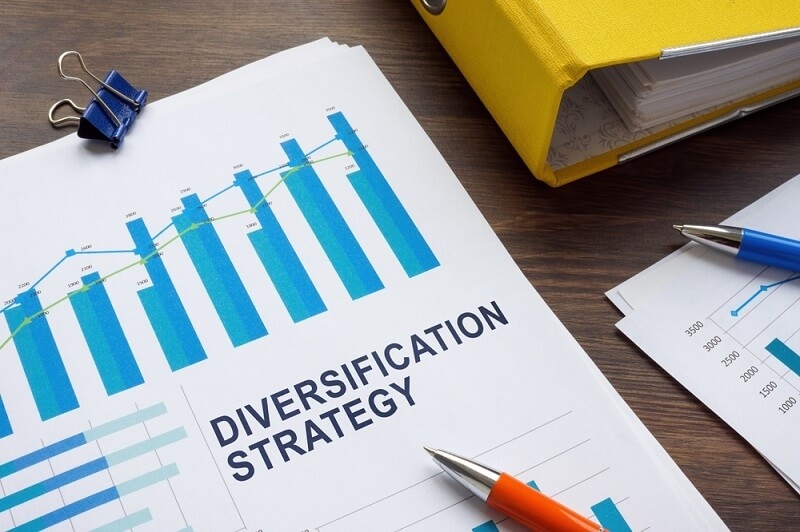
Starting your investment journey can feel like standing on a diving board for the first time. You know it's worth the leap, but you are unsure how best to jump. Suppose you are trying to figure out how to construct a diversified investment portfolio using only your business sense. Good job. In that case, you have already outperformed many people by landing on the first question!
Building a portfolio is not simply buying stocks and holding your breath. It is about balance and intention, as well as understanding how to position your investments across the market so that one event does not wipe out your earned capital. At this point, the notion of diversifying investments for beginners becomes relevant.
Let us take a look at what a diversified portfolio means, why it matters, and how you can create one, even if you're starting from nothing.
A diversified investment portfolio is a collection of multiple asset classes, seeking to manage risk while seeking a reasonable growth rate. Rather than investing all your available funds into one investment type (like tech stocks or real estate), you are diversifying your funds across various categories. Therefore, if one category declines, the other categories may rise and support your total portfolio value.
Consider this: Would you prefer to carry your groceries in one flimsy paper bag, or would you wish to have several sturdier bags? That is precisely how diversifying your investments works: You want to avoid putting all your financial eggs in one basket.
Before creating your portfolio, it is essential to be honest about what you wish to achieve through investing. Your mix of investments will change based on your financial goal, age, risk tolerance, and timeline.
Each of these goals will have its own time horizon and risk tolerance. For example, a thirty-year-away retirement allows you to be much more aggressive than if you are trying to buy a house in five years.
You want to spread investment risk while aligning your mix of assets to what you want to gain from your money and when.

Your asset allocation strategy is how you divide your money among different types of investments. The three major asset classes are:
A balanced portfolio example might look like this for a moderate-risk investor:
This is just a starting point. Your situation might call for more aggressive (80% stocks) or conservative (40% stocks) allocations.
The goal is to combine assets that don’t move simultaneously in the same direction.
Diversifying investments for beginners doesn’t mean spreading your money thinly across everything. It means making thoughtful choices that reflect your goals, knowledge, and comfort with risk.
Whatever route you take, the key is to keep your emotions in check and stay consistent.
Owning "some stocks" or "a few bonds" isn't good enough. Proper diversification goes further. You can spread your investments to reduce risk even within asset classes.
When you have different types, you are less reliant on one segment to support your entire portfolio. Layers protect you if one area is weak.
Markets move. Over time, your original allocation can drift. For example, if stocks perform well, they may grow to 70% of your portfolio, even if you initially set them at 60%.
That’s why rebalancing is necessary. It means adjusting your investments periodically to realign with your target allocation.
Rebalancing helps you sell high and buy low, which is smart investing in any market.
The idea of risk often scares new investors, but risk isn’t always bad. It simply reflects how much uncertainty you will accept for a potential reward.
A diversified portfolio helps manage that risk. Here’s how:
Remember, no investment is entirely risk-free, but smart diversification can make the ride smoother.
Even investors with good intentions can get trapped. In particular, think about these points:
Investing all your money into the newest tech stock or cryptocurrency might seem like a rush, but it’s clearly the opposite of diversification.
It can happen. Investing in too many mutual funds or ETFs that manage the same assets can be inefficient for your returns and create unnecessary complexity.
Even small annual fees can have an impact on returns 20 or 30 years down the road. Look for as low a cost as you can with index funds or ETFs to minimize fees.
If you do not regularly check your portfolio, you could be inadvertently very risky and not even realize it.
If you're ready to start but don’t know how to begin, here’s a simple framework:
Start small if needed—consistency is more important than the amount.
You can choose:
Use a diversified asset allocation model based on your goals and risk tolerance.
Avoid panic-selling during downturns. Stick to your plan and think long-term.
Here’s a simplified balanced portfolio example for a beginner with moderate risk tolerance:
This mix offers growth potential with a safety net—an ideal setup for someone just starting.
Learning how to build a diversified investment portfolio isn’t just about numbers and percentages—it’s about creating a financial foundation that reflects your life, goals, and comfort with risk.
By following the steps in this guide, applying a strong asset allocation strategy, and spreading investment risk across different types of assets, you can build a portfolio that grows steadily and withstands market fluctuations.
And remember: you don’t need to be rich to invest. You need to be consistent, informed, and patient.
This content was created by AI